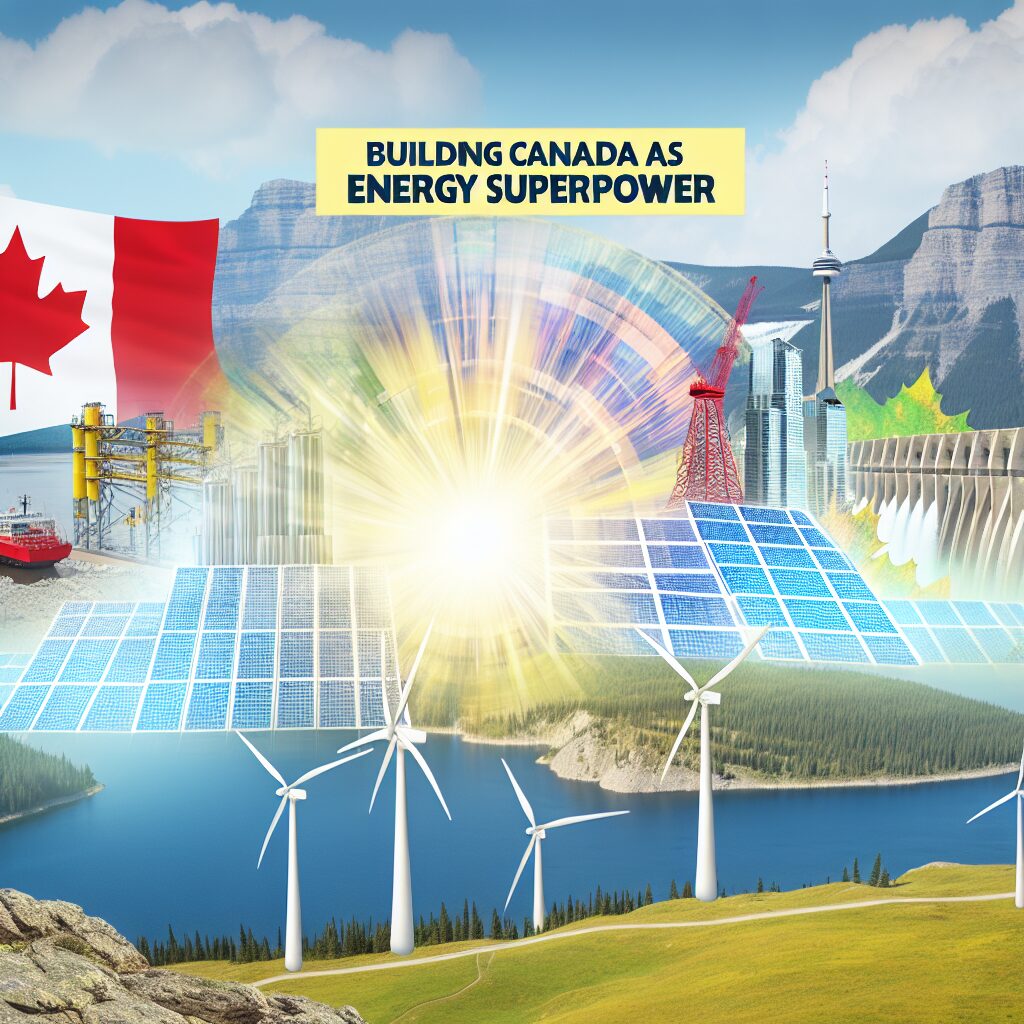Building Canada as an Energy Superpower: Carney’s Plans Unveiled
As the global energy landscape continues to evolve, former Bank of Canada Governor Mark Carney has unveiled a comprehensive strategy aimed at transforming Canada into a major energy superpower. With a focus on sustainability, innovation, and economic resilience, Carney’s plan outlines how the country can leverage its natural resources and growing clean tech sector to lead in both traditional and renewable energy markets.
A Vision Rooted in Transition
Carney emphasized that Canada’s path to becoming an energy superpower lies not in clinging to past models but embracing the energy transition already underway. His strategy includes advancing technologies like hydrogen, carbon capture, and battery storage, all while decarbonizing existing industries such as oil and gas.
Key elements of this vision include:
- Investing in clean energy infrastructure
- Scaling up green hydrogen production and export capabilities
- Supporting carbon capture utilization and storage (CCUS) projects
- Modernizing power grids for improved efficiency and reliability
Carney stressed that this transformation is not just about reducing emissions—it’s also about creating high-quality jobs and new economic growth opportunities across provinces.
Public-Private Collaboration Is Central
A recurring theme in Carney’s plan is the importance of collaboration between government and industry. He called for predictable regulatory frameworks that provide clarity to investors while ensuring environmental integrity.
To accelerate progress, he recommended:
- Public funding to de-risk private investment in early-stage technologies
- Streamlined permitting processes for large-scale energy projects
- Federal and provincial alignment on climate and energy goals
These measures aim to make Canada more competitive in attracting capital for both traditional energy expansion and emerging sectors like renewables and critical minerals.
Leveraging Canada’s Natural Advantages
Canada’s vast geography and resource-rich regions give it a competitive edge. Carney pointed out that the country is uniquely positioned to supply low-carbon energy to both domestic and international markets.
Some of the geographic advantages highlighted include:
- Abundant hydroelectric resources in provinces like Quebec and British Columbia
- Vast reserves of critical minerals needed for battery technology
- Established oil and gas infrastructure that can be adapted for carbon-neutral applications
By building on these strengths, Carney argued that Canada can play a central role in the global shift toward cleaner energy systems.
Exporting Clean Innovation Globally
Another pillar of Carney’s proposal involves positioning Canada as a global exporter not only of energy but also of clean energy technologies and expertise. He sees significant potential in developing partnerships with countries seeking to decarbonize their economies.
This includes:
- Hydrogen fuel exports to Asia and Europe
- Licensing Canadian-developed CCUS technologies
- Training programs to support global energy workforce development
Carney noted that by combining natural resources with innovation, Canada could become a key player in the international energy ecosystem.
Climate Goals and Economic Growth as Dual Objectives
While acknowledging the urgency of climate action, Carney underscored the need to ensure that the energy transition supports long-term economic stability. He made the case that environmental sustainability and economic competitiveness do not have to be opposing goals.
Through strategic investment and policy design, Canada could:
- Create thousands of sustainable jobs nationwide
- Attract global investment into clean energy sectors
- Ensure energy affordability for Canadians
This balanced approach, according to Carney, will help bridge political and regional divides often present in discussions around energy policy.
Looking Ahead
Mark Carney’s announcement lays the groundwork for what could become a defining chapter in Canada’s energy evolution. While implementation will require cooperation among federal and provincial governments, Indigenous communities, and private industry, his blueprint sets clear priorities for moving forward.
If acted upon, this framework could enable Canada to establish itself not only as a reliable energy supplier but also as a leader in the global clean energy transition.
Analyzed and outlined by ChatGPT-4o, images by DALL·E 3.
Source
https://www.ctvnews.ca/video/politics/2025/04/23/carney-announces-plans-for-building-canada-into-an-energy-superpower/

